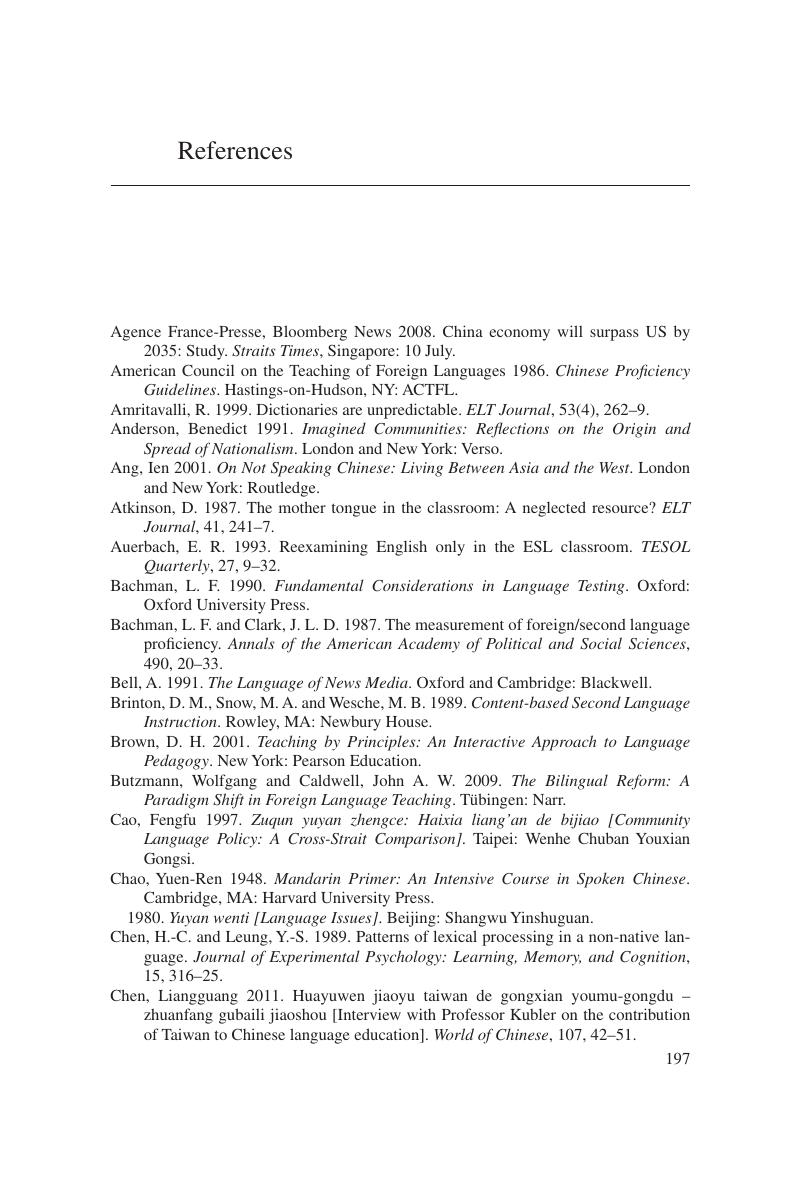Book contents
- Teaching Chinese as an International Language
- Teaching Chinese as an International Language
- Copyright page
- Dedication
- Contents
- Figures
- Tables
- Preface
- Acknowledgements
- 1 The Spread of Mandarin as a Global Language
- 2 Mandarin Chinese as Spoken in Mainland China, Taiwan, Hong Kong and Singapore: A Comparison
- 3 Hard Truths about Chinese Language Policy and Planning in Singapore
- 4 A Sociolinguistic Profile of Chinese Language Student-Teachers in Singapore
- 5 Who Are We? The China Complex of Chinese in Singapore
- 6 The Use of English in the Teaching of Chinese: Making the Most of the Learner's Linguistic Resources
- 7 The Teaching of Chinese by Non-Native Teachers: Experience and Implications
- 8 ICT1 in L2 Learning and Teaching: Design and Development of Bilingual Digital Instructional Materials
- 9 Internet Plus and TCIL: A Progressive Chinese Pronunciation Programme
- 10 From Bilingual to Monolingual: A New Business Chinese Test for the Progressive Testing of Receptive Skills
- 11 The Four Language Skills and the Compilation of Chinese Learner's Dictionaries: An Integrative Approach
- 12 The Bilingual Hybrid Teacher Model for Teaching Chinese as an International Language
- 13 The Master of Arts in Teaching Chinese as an International Language
- 14 The Making of the Translation Service Industry in Singapore
- Epilogue
- References
- Index
- References
References
Published online by Cambridge University Press: 31 August 2017
- Teaching Chinese as an International Language
- Teaching Chinese as an International Language
- Copyright page
- Dedication
- Contents
- Figures
- Tables
- Preface
- Acknowledgements
- 1 The Spread of Mandarin as a Global Language
- 2 Mandarin Chinese as Spoken in Mainland China, Taiwan, Hong Kong and Singapore: A Comparison
- 3 Hard Truths about Chinese Language Policy and Planning in Singapore
- 4 A Sociolinguistic Profile of Chinese Language Student-Teachers in Singapore
- 5 Who Are We? The China Complex of Chinese in Singapore
- 6 The Use of English in the Teaching of Chinese: Making the Most of the Learner's Linguistic Resources
- 7 The Teaching of Chinese by Non-Native Teachers: Experience and Implications
- 8 ICT1 in L2 Learning and Teaching: Design and Development of Bilingual Digital Instructional Materials
- 9 Internet Plus and TCIL: A Progressive Chinese Pronunciation Programme
- 10 From Bilingual to Monolingual: A New Business Chinese Test for the Progressive Testing of Receptive Skills
- 11 The Four Language Skills and the Compilation of Chinese Learner's Dictionaries: An Integrative Approach
- 12 The Bilingual Hybrid Teacher Model for Teaching Chinese as an International Language
- 13 The Master of Arts in Teaching Chinese as an International Language
- 14 The Making of the Translation Service Industry in Singapore
- Epilogue
- References
- Index
- References
Summary

- Type
- Chapter
- Information
- Teaching Chinese as an International LanguageA Singapore Perspective, pp. 197 - 204Publisher: Cambridge University PressPrint publication year: 2017



